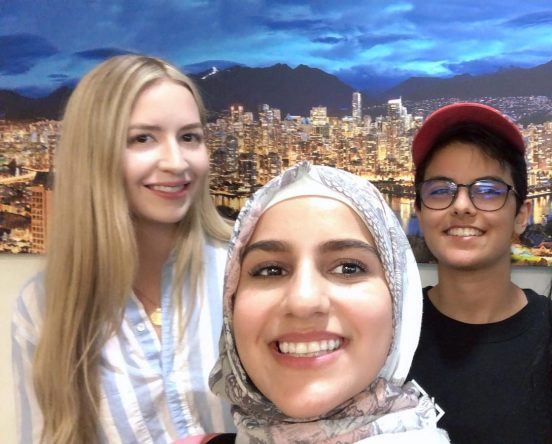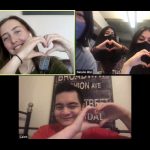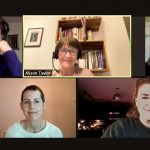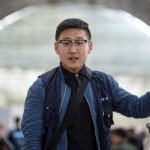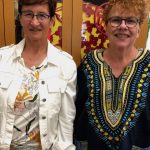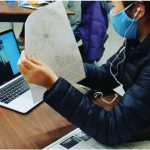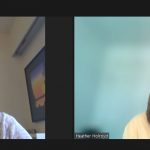By Alison Taylor
Mikayla and Sakina are undergraduate students in anthropology who just completed 6 credits in 6 weeks as part of the Urban Ethnographic Field School (UEFS). I met them at the last class where they and their peers presented their community learning to other students and community partners. Mikayla had been placed with another student at at Gordon Neighbourhood House, while Sakina worked with two peers at Pro Bono legal services.
Both students note that volunteering at the placement site over the duration of the class changes the way students do ethnographic research. Sakina notes, “you have dual roles—volunteer and researcher—so you have to be more invested in class.” Mikayla adds that students feel more accountable to community members in their research. Students had to learn how to develop ethical relationships that involve treating the community with dignity—something that hasn’t always happened in the past in anthropological or sociological research.
Sakina and Mikayla enjoyed the movement back and forth between classroom and their community placement. While it wasn’t always easy to see connections between course readings and their volunteer worksites, course content and activities helped them to better understand life in the downtown eastside. They especially appreciated learning about the range of possible approaches to doing ethnography. Sakina notes, ““I found myself observing better and interpreting better because of class. And then [community work] made class less abstract and more concrete.”
Going beyond theory to try out fieldwork was helpful for Sakina, who is starting to think about her next steps, including grad school. Having access to local fieldwork opportunities was also critical for Mikayla, who can’t afford to participate in study abroad.
Both students felt UEFS, and community-engaged learning more generally, have great potential. Mikayla describes the UEFS as a “dignifying experience” for students as well as community members. She appreciated the respectful relationship to community and students modeled by instructors.
Sakina came away from the field school more hopeful about universities becoming less elitist, and more accessible and inclusive in the future. Although she is aware that the “global North is often seen as the epicenter of epistemology and education,” the field school experience showed her how epistemological shifts can occur.
Thinking about higher education and low-income communities as racialized and classed spaces is part of shifting the story.[1] Both students were excited about “destabilizing the power relationships previously engrained into research” by producing knowledge collaboratively with community members. They welcomed the opportunity to learn from peers, instructors, and community members to develop what Akkerman and Bakker[2] describe as boundary-crossing competence. Or better still, to dissolve boundaries entirely.
[1] The Learning Exchange has produced a series of video stories of this name. See: https://learningexchange.ubc.ca/ubc-student-learning/student-orientation-materials/
[2] Akkerman, S.F. & Bakker, A. (2011). Boundary crossing and boundary objects. Review of Educational Research, 81(2), 132-169.
